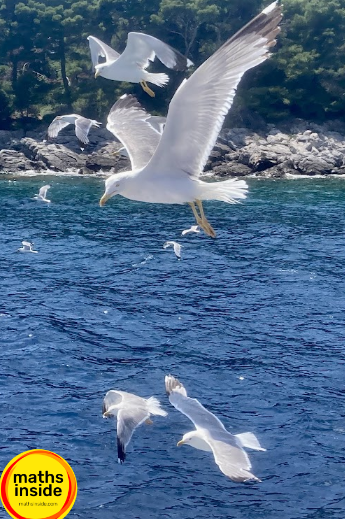The Gaul of Gulls (in motion)

Seagulls’ ability to fly is nothing short of a mathematical wonder.
They flap their wings down against the air creating an opposing force, pushing their bodies up. Since their bodies are so large (due to their immense wingspan) and their mass is so comparatively small, they can create more lifting force for themselves. The angle and curvature of their wings helps guide wind along their surface, pushing them up even further, and allowing them to glide through the skies. Both up high and a hair’s breadth from the surface of the sea.
Seagulls and other birds often travel long distances together in a V-formation. This is because as the bird at the crest of the V flaps its wings, it creates spinning vortices of air behind it. The birds behind time their flaps against the upwash of these vortices, making flight easier and less energy-consuming. Then, when the bird at the front is tired, it can drop behind for a rest. This energy efficient process allows gulls to roam the seas and terrorise beaches as they please.
— Louis Scott (S6)